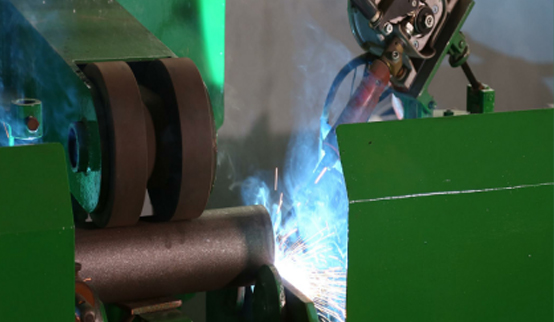 Afrikaans
Afrikaans  Albanian
Albanian  Amharic
Amharic  Arabic
Arabic  Armenian
Armenian  Azerbaijani
Azerbaijani  Basque
Basque  Belarusian
Belarusian  Bengali
Bengali  Bosnian
Bosnian  Bulgarian
Bulgarian  Catalan
Catalan  Cebuano
Cebuano  Corsican
Corsican  Croatian
Croatian  Czech
Czech  Danish
Danish  Dutch
Dutch  English
English  Esperanto
Esperanto  Estonian
Estonian  Finnish
Finnish  French
French  Frisian
Frisian  Galician
Galician  Georgian
Georgian  German
German  Greek
Greek  Gujarati
Gujarati  Haitian Creole
Haitian Creole  hausa
hausa  hawaiian
hawaiian  Hebrew
Hebrew  Hindi
Hindi  Miao
Miao  Hungarian
Hungarian  Icelandic
Icelandic  igbo
igbo  Indonesian
Indonesian  irish
irish  Italian
Italian  Japanese
Japanese  Javanese
Javanese  Kannada
Kannada  kazakh
kazakh  Khmer
Khmer  Rwandese
Rwandese  Korean
Korean  Kurdish
Kurdish  Kyrgyz
Kyrgyz  Lao
Lao  Latin
Latin  Latvian
Latvian  Lithuanian
Lithuanian  Luxembourgish
Luxembourgish  Macedonian
Macedonian  Malgashi
Malgashi  Malay
Malay  Malayalam
Malayalam  Maltese
Maltese  Maori
Maori  Marathi
Marathi  Mongolian
Mongolian  Myanmar
Myanmar  Nepali
Nepali  Norwegian
Norwegian  Norwegian
Norwegian  Occitan
Occitan  Pashto
Pashto  Persian
Persian  Polish
Polish  Portuguese
Portuguese  Punjabi
Punjabi  Romanian
Romanian  Russian
Russian  Samoan
Samoan  Scottish Gaelic
Scottish Gaelic  Serbian
Serbian  Sesotho
Sesotho  Shona
Shona  Sindhi
Sindhi  Sinhala
Sinhala  Slovak
Slovak  Slovenian
Slovenian  Somali
Somali  Spanish
Spanish  Sundanese
Sundanese  Swahili
Swahili  Swedish
Swedish  Tagalog
Tagalog  Tajik
Tajik  Tamil
Tamil  Tatar
Tatar  Telugu
Telugu  Thai
Thai  Turkish
Turkish  Turkmen
Turkmen  Ukrainian
Ukrainian  Urdu
Urdu  Uighur
Uighur  Uzbek
Uzbek  Vietnamese
Vietnamese  Welsh
Welsh  Bantu
Bantu  Yiddish
Yiddish  Yoruba
Yoruba  Zulu
Zulu belt conveyor idlers
The Importance of Belt Conveyor Idlers in Material Handling Systems
Belt conveyor idlers are crucial components in the operation of material handling systems, used across various industries, from mining and manufacturing to logistics and warehousing. These idlers play a significant role in supporting and guiding the conveyor belt, ensuring its efficient movement and reducing wear and tear over time.
At its core, an idler is a cylindrical roller that is positioned at intervals along the conveyor belt. Their primary function is to support the weight of the belt and the materials being transported, which can often be quite substantial. By bearing this load, idlers help maintain the proper tension in the belt, preventing sagging and ensuring smooth operation. This is particularly important as a well-tensioned belt is less likely to misalign or slip off its tracks, leading to increased efficiency and reduced downtime.
Another key function of idlers is their role in minimizing friction. As the belt moves, it comes into contact with the idlers, which allow it to glide smoothly. This reduces wear on the belt itself as well as the energy required to operate the conveyor system. In situations where friction is kept to a minimum, there is a noticeable decrease in operational costs due to lower energy consumption and reduced maintenance needs.
belt conveyor idlers

Belt conveyor idlers come in various types to accommodate different applications and environments. There are trough idlers, which are designed to support bulk materials, and flat idlers, often used for lighter loads. Additionally, there are specialized idlers designed for specific purposes, such as return idlers that support the belt on its way back to the loading section. The choice of idler type depends on factors such as the nature of the materials being transported, the length of the conveyor system, and the loading conditions.
Proper installation and maintenance of belt conveyor idlers are critical to the overall performance of a conveyor system. Regular inspections can prevent issues such as misalignment, which can lead to increased friction and premature wear on both the idlers and the belt. By addressing wear and tear early, companies can extend the lifespan of their conveyor belts, maintain productivity, and reduce the costs associated with repairs and replacements.
In conclusion, belt conveyor idlers are a fundamental component of efficient material handling systems. Their ability to support, guide, and reduce friction along the conveyor belt is essential for maintaining operational efficiency. In an era where operational costs are continuously scrutinized, investing in high-quality idlers and ensuring regular maintenance can lead to significant savings and a more reliable conveyor system. As industries continue to evolve, the importance of optimizing these components will only grow, making them indispensable in the advancement of material handling technologies.
-
Revolutionizing Conveyor Reliability with Advanced Rubber Lagging PulleysNewsJul.22,2025
-
Powering Precision and Durability with Expert Manufacturers of Conveyor ComponentsNewsJul.22,2025
-
Optimizing Conveyor Systems with Advanced Conveyor AccessoriesNewsJul.22,2025
-
Maximize Conveyor Efficiency with Quality Conveyor Idler PulleysNewsJul.22,2025
-
Future-Proof Your Conveyor System with High-Performance Polyurethane RollerNewsJul.22,2025
-
Driving Efficiency Forward with Quality Idlers and RollersNewsJul.22,2025





























